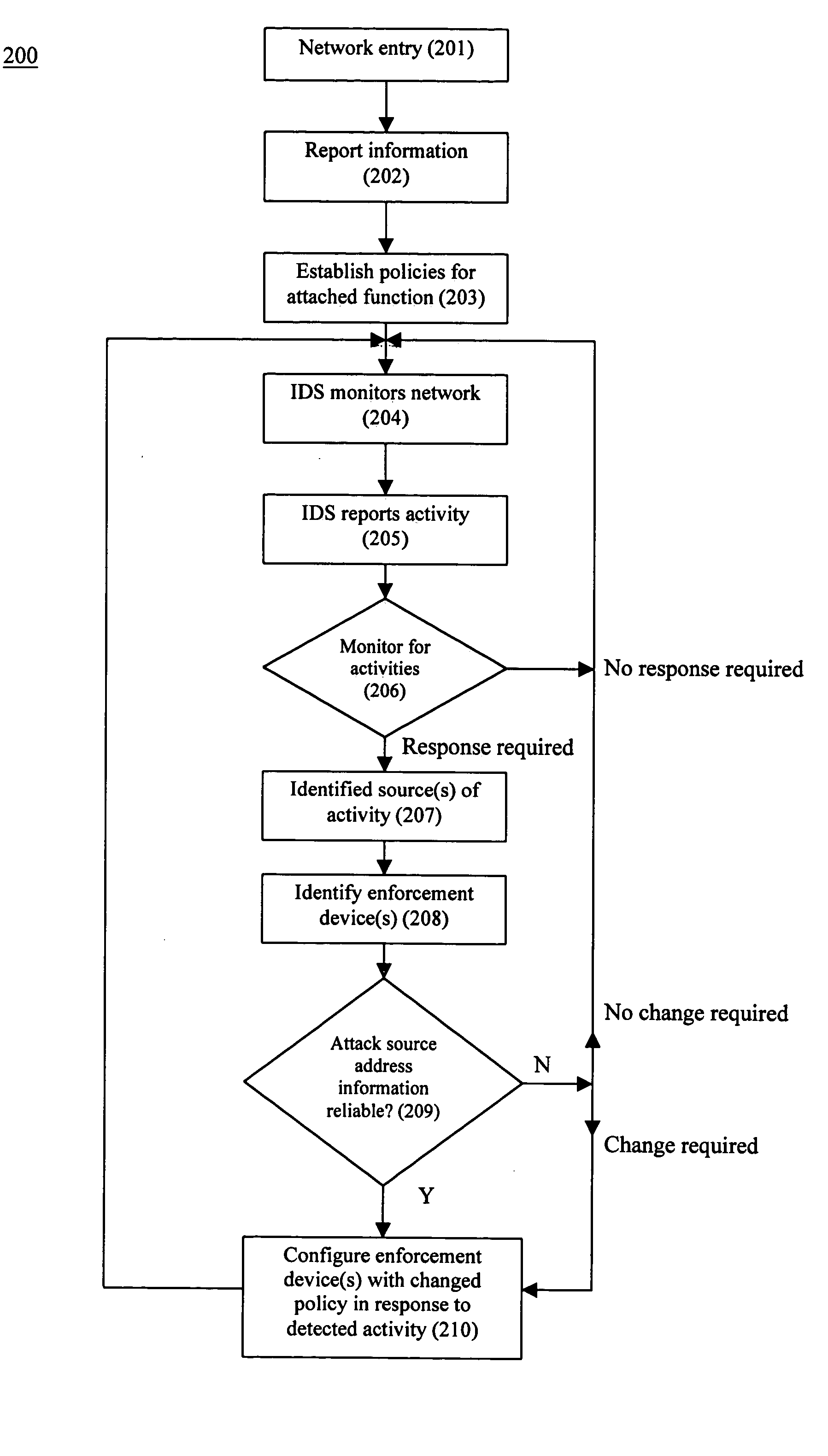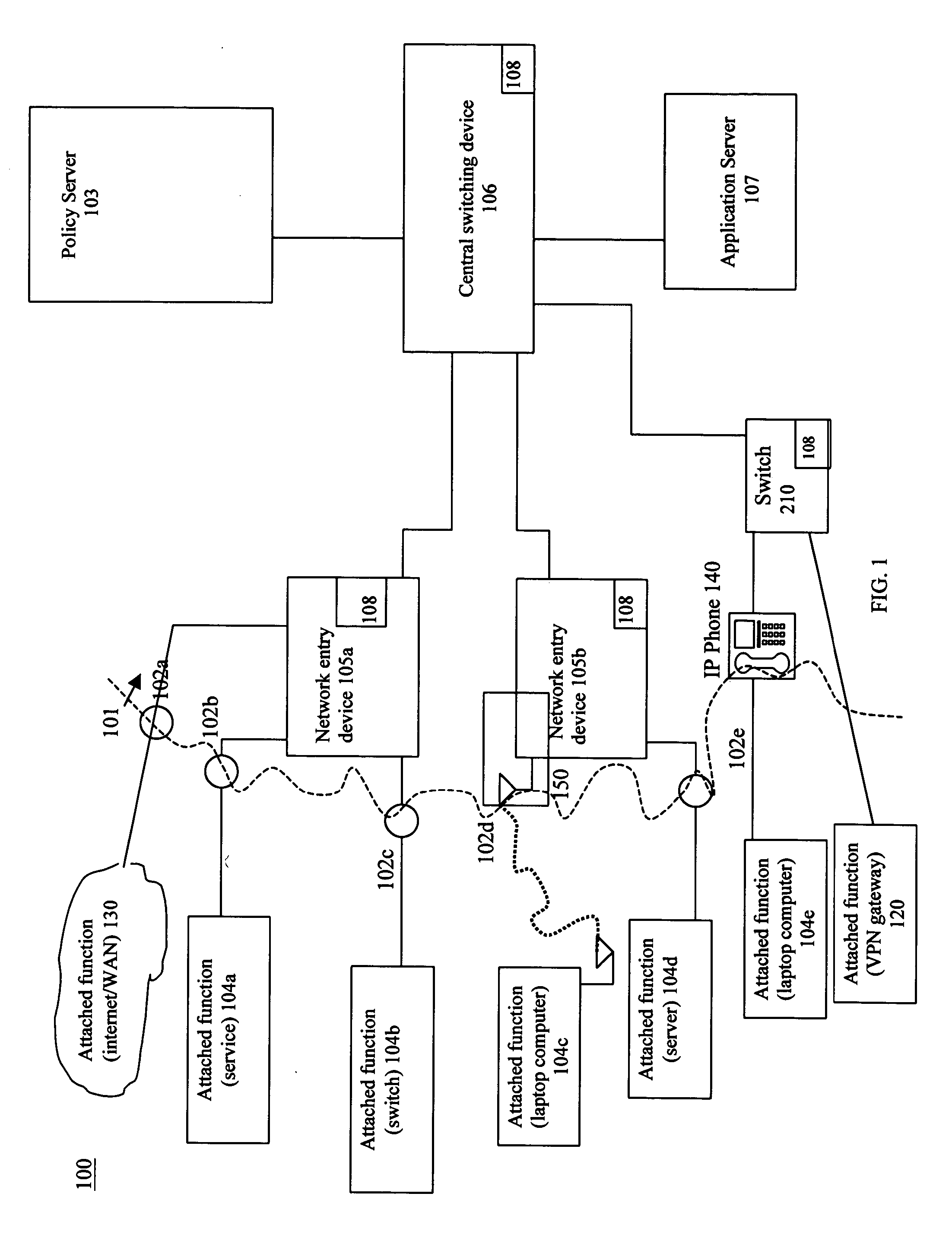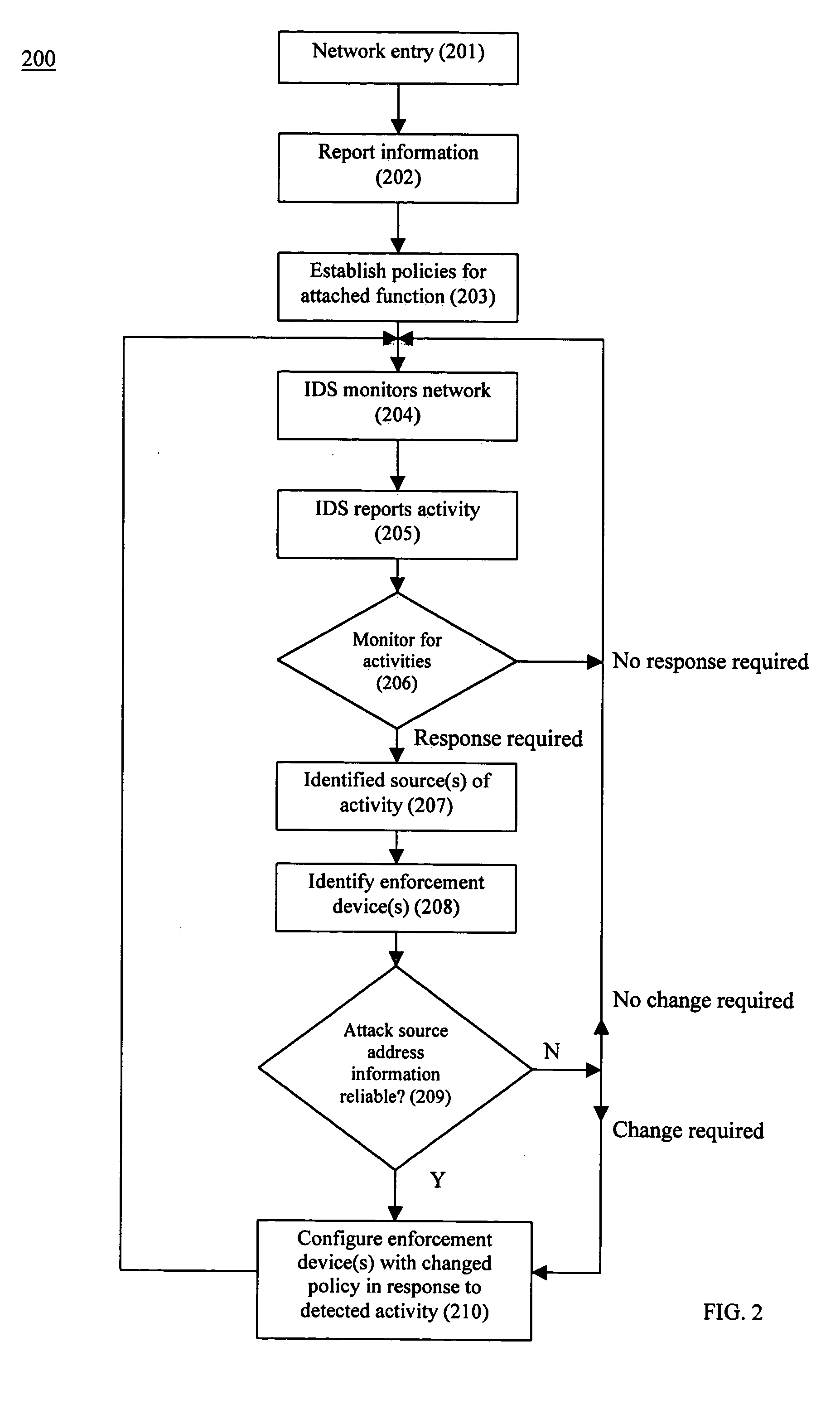Distributed intrusion response system
a technology of intrusion response and distributed intrusion, which is applied in the direction of program control, unauthorized memory use protection, instruments, etc., can solve problems such as the change of policy at the network entry
- Summary
- Abstract
- Description
- Claims
- Application Information
AI Technical Summary
Benefits of technology
Problems solved by technology
Method used
Image
Examples
Embodiment Construction
[0029] The present invention is a system and related method to detect and respond, in a distributed and dynamic manner, to intrusions associated with the operation of a network system. Referring to FIG. 1, a network system 100 incorporating the capability of the Distributed Intrusion Response System (DIRS) of the present invention operates and provides network services to attached functions according to policies assigned to the attached functions. Network system 100 includes a network infrastructure 101 and one or more attached functions connected to or connectable to the network infrastructure 101. The network infrastructure 101 may include any or all of the following: switching devices, routing devices, firewalls, access points, MANs, WANs, voice interconnect systems, VPNs, and internet connectivity interconnected to one another and connectable to the attached functions by way of connection points. The DIRS of the invention employs both hardware and software (e.g., a function embo...
PUM
 Login to View More
Login to View More Abstract
Description
Claims
Application Information
 Login to View More
Login to View More - R&D
- Intellectual Property
- Life Sciences
- Materials
- Tech Scout
- Unparalleled Data Quality
- Higher Quality Content
- 60% Fewer Hallucinations
Browse by: Latest US Patents, China's latest patents, Technical Efficacy Thesaurus, Application Domain, Technology Topic, Popular Technical Reports.
© 2025 PatSnap. All rights reserved.Legal|Privacy policy|Modern Slavery Act Transparency Statement|Sitemap|About US| Contact US: help@patsnap.com



